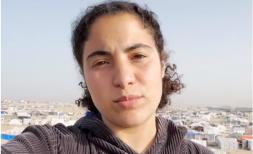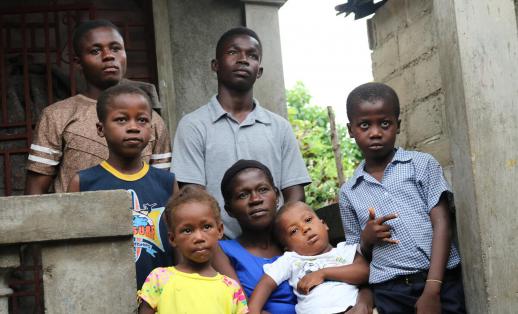Education under attack in Gaza, with nearly 90% of school buildings damaged or destroyed

Rubble and destruction in Rafah, Gaza. Bisan/Save the Children
“I can’t see a life for them anymore, or a future.” This is what Ahmad* fears for his three children, currently displaced in Rafah in Gaza, occupied Palestinian territory.
More than 14,500 of Gaza’s 1.1 million children have been killed since 7 October – thousands more are ‘missing’, presumed buried under the rubble, their deaths unmarked. The life-saving aid which families rely on has either been drip-fed or denied by Israeli authorities – while essential services have been decimated by ongoing Israeli airstrikes and hostilities.
{cta | We stand side by side with children in the world's toughest places. <span class="text-primary">Your support is urgently needed</span>. | https://donate.savethechildren.org/en/donate/children-crisis-donate-child-emergency-fund| Donate now}
For Ahmad and many other desperate parents, they are striving to keep their children alive. But they are also aware that if their children survive the bombs and hunger, their potential in the longer term is in real jeopardy.
All schools in Gaza have been closed for 625,000 students for 6 months. According to the Ministry of Education, as of 2 April, more than 5,479 students and 261 teachers have been killed in the Gaza Strip since 7 October.
As of 30 March, the Education Cluster estimates that 87.7% of all school buildings in Gaza have been damaged or destroyed. 212 school buildings have had a direct hit and could be severely damaged and a further 282 have sustained moderate, minor or likely damage. Previously 503,500 children attended, and 18,900 teachers taught at the school buildings which have now had a direct hit or sustained major or moderate damage. Out of the 16 university campuses in Gaza, 4 have been destroyed, and 10 have been severely or moderately damaged.
Due to the challenges to access areas, particularly in Gaza and North Gaza governorates, the Education Cluster administered a Satellite-derived Damage Assessment in Gaza to verify initial school damage data.
The findings are shocking. The satellite images show the scale of the bombardment on hundreds of schools. International Humanitarian law (IHL) grants schools’ general protection against direct attacks: a direct attack against a school violates the rule of distinction and constitutes a breach of IHL. Attacks on schools are a grave violation against children in conflict. The destruction shown also demonstrates the devastating, lasting impact on a generation of children’s learning. Their learning has already been cut-off due to this conflict. But once hostilities cease, they will have no schools to return to.
When children are out of school for a long period, their learning does not just stop but is also likely to regress. We know from previous crises that the longer children are out of school, the greater the risk that they do not return. This risks their prospects in the longer-term, including their income, and their mental and physical health, while they may also be at greater risk from violence and abuse.
Distribution of school buildings and damaged sites in Khan Younis Governorate

Example snapshots of Jules & Abu Thar Al Ghaffari & Sami Al Alamiy & Al Taqoa & Sarafand & Asdoud & Al Zahawi Schools - Gaza/An Naser

© Education Cluster Satellite-derived Damage Assessment.
The ongoing conflict – the relentless bombardment, the decimation of vital services and the imminent famine has translated into a destruction of the fundamental tenets of childhood. Save the Children found that children have no escape from the reality of war, no stable routine, no opportunity to learn or play – and for many, no family. These are essential protective factors that children need to mitigate against the risk of lasting mental harm.
Children in Gaza have consistently expressed that going back to school is one of their top priorities. It provides them with a sense of normalcy, opportunities to play with friends and to continue to develop skills and knowledge for their futures.iv
Maher*, a father in Gaza says “A few days ago, one of my children told me, ‘I want to eat healthy food. I really want to go to school and live my old, normal life. And I want to play.’
Education in emergencies is an essential part of the first phase of a quality child-focused humanitarian response, where safe spaces are established where children can play, receive psychosocial support with referrals to specialised Mental Health and Psychosocial Support (MHPSS) and Child Protection services.
But in Gaza no place is safe – so scaling up the critical education in emergencies response is currently near impossible and not without risk.
An immediate and definitive ceasefire is needed. The siege on Gaza must end, with all crossings (re)opened to allow goods in accordance with IHL obligations for parties to the conflict – both commercial and humanitarian.
The Government of Israel should immediately end unlawful attacks on education and endorse and fully implement the Safe Schools Declaration. All parties must respect the protected status of schools and not use schools as battlegrounds.
The international community should strongly condemn all attacks on schools and demand that all parties to the conflict respect IHL, commit no further grave violations against children and ensure that there is accountability for those committed to date. It must prioritise urgent inclusive MHPSS and education in emergencies whenever safe and unimpeded humanitarian access is a reality.
Hope dies when a parent or child can no longer imagine their future and fulfil their rights. We must act now for a permanent and definitive ceasefire. We must keep their hope alive.







